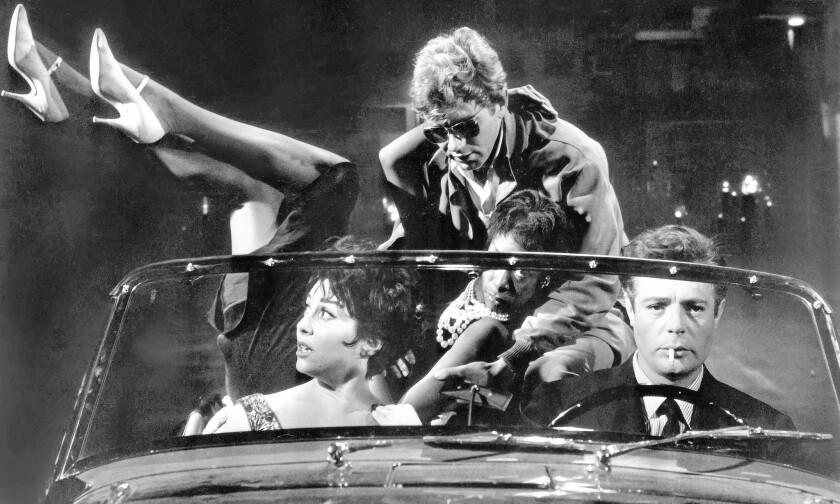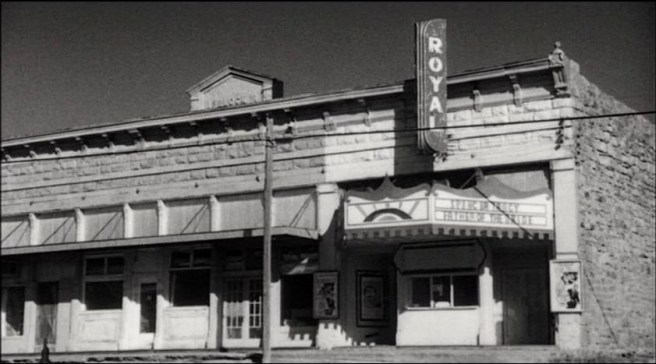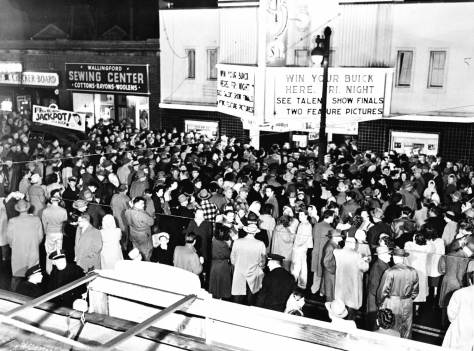
As the year closes, it’s time to pick the top 10 first-run films out of those that I reviewed in 2020. In a “normal” year, I usually watch and review between 50 and 60 first-run features and documentaries. This year, the tally was…substantially lower (2020 has been challenging on many fronts). I have included streaming links, if available. As usual, my list is alphabetical-not by rank.

Bloody Nose, Empty Pockets – Anyone who has ever spent a few hours down the pub knows there are as many descriptive terms for “drunks” as the Inuits have for “snow” . Happy drunks, melancholy drunks, friendly drunks, hostile drunks, sentimental drunks, amorous drunks, philosophical drunks, crazy drunks…et.al. You get all of the above (and a large Irish coffee) in this extraordinary (and controversial) genre-defying Sundance hit.
Co-directed by brothers Turner and Bill Ross, the film vibes the “direct cinema” school popularized in the 60s and 70s by another pair of sibling filmmakers-the Maysles brothers. It centers on the staff and patrons of a Las Vegas dive bar on its final day of business. Populated by characters straight out of a Charles Bukowski novel, the film works as a paean to the neighborhood tavern and a “day in the life” character study. (Full review)
“Bloody Nose, Empty Pockets” is streaming on Amazon Prime

Capital in the Twenty-First Century – So how did the world become (to quote from one of Paddy Cheyefsky’s classic monologues in Network) “…a college of corporations, inexorably determined by the immutable bylaws of business”? And come hell, high water, or killer virus, why is it that “Thou shalt rally the unwashed masses to selflessly do their part to protect the interests of the Too Big to Fail” (whether it’s corporations, the dynastic heirs of the 1% or the wealth management industry that feeds off of them) remains the most “immutable bylaw” of all?
Justin Pemberton’s timely documentary (based on the eponymous best-seller by economist Thomas Piketty) tackles those kind of questions. Cleverly interweaving pop culture references with insightful observations by Piketty and other economic experts, the film illustrates (in easy-to-digest terms) the cyclical nature of feudalism throughout history. (Full review)
“Capital in the Twenty-First Century” is streaming on Amazon Prime

Desert One – In 1980, President Jimmy Carter sent the Army’s Delta Force to bring back 53 American citizens held hostage in Iran. It did not end well. The failed mission also likely ended Carter’s already waning chances of winning a second term as President.
Using previously inaccessible archival sources (including White House recordings) two-time Academy Award winner Barbara Kopple (Harlan County USA) offers a fresh historical perspective, and (most affectingly) an intimate glimpse at the human consequences stemming from what transpired. She achieves the latter with riveting witness testimony by hostages, mission personnel, Iranians, and former President Carter. An eye-opening documentary. (Full review)
“Desert One” is streaming on Amazon Prime

Love Spreads – I’m a sucker for stories about the creative process, and Welsh writer-director Jamie Adams’ dramedy (a 2020 Tribeca Film Festival selection) is right in that wheelhouse. “Glass Heart” is an all-female rock band who have holed up Led Zep style in an isolated country cottage to record a follow-up to their well-received debut album. Everyone is raring to go, the record company is bankrolling the sessions, and the only thing missing is…some new songs.
The pressure has fallen on lead singer and primary songwriter Kelly (Alia Shawcat). Unfortunately, the dreaded “sophomore curse” has landed squarely on her shoulders, and she is completely blocked. The inevitable tensions and ego clashes arise as her three band mates and manager struggle to stay sane as Kelly awaits the Muse. It’s a little bit Spinal Tap, (with a dash of Love and Mercy), bolstered by a smart script, wonderful performances, and some catchy original songs. (Full review)

Never, Rarely, Sometimes, Always – Writer-director Eliza Hittman’s timely drama centers on 17-year old Autumn (Sidney Flanigan) , a young woman in a quandary over an unwanted pregnancy who has only one real confidant; her cousin, BFF and schoolmate Skylar (Talia Ryder). They both work part-time as grocery clerks in rural Pennsylvania (a state where the parent of a minor must consent before an abortion is provided). After a decidedly unhelpful visit to her local “crisis pregnancy center” and a harrowing failed attempt to self-induce an abortion, Autumn and Skylar scrape together funds and hop a bus to New York City.
Hittman really gets inside the heads of her two main characters; helped immensely by wonderful, naturalistic performances from Flanigan and Ryder. Hittman has made a film that is quietly observant, compassionate, and non-judgmental. She does not proselytize one way or the other about the ever-thorny right-to-life debate. This is not an allegory in the vein of The Handmaid’s Tale, because it doesn’t have to be; this could easily be any young woman’s story in the here and now. (Full review)
“Never Rarely Sometimes Always” is currently available on HBO

Pacified – The impoverished, densely populated favelas of Rio and the volatile political climate of contemporary Brazil make a compelling backdrop for writer- director Paxton Winters’ crime drama (a 2020 Tribeca Film Festival selection). A cross between The King of New York and City of God, it takes place during the height of the strong-arm “pacification” measures conducted by the government to “clean up” the favelas in preparation for the 2016 Rio Olympics. Tight direction, excellent performances and gorgeous cinematography by Laura Merians. (Full review)

76 Days – Filmed during the early days of the Coronavirus epidemic and focusing on the day-to-day travails of Wuhan’s front-line health workers as they attend to the crush of first-wave COVID patients, this remarkable documentary was co-directed by New York filmmaker Hao Wu (People’s Republic of Desire) in association with China-based journalists Weixi Chen.
While the film is slickly edited in such a way to suggest everything occurs at one medical facility, it was actually filmed at four different Wuhan hospitals over a period of several months (it was shot at great personal risk by the two journalists and their small camera crews). Eschewing polemics or social commentary, the filmmakers opt for the purely observational “direct cinema” approach.
I know it seems perverse to include this in my top 10 for a year where movies serve as one of the few respites from the real-life horror of the pandemic; nonetheless, 76 Days must be acknowledged as a timely, humanistic, and essential document. (Full review)
“76 Days” is streaming on virtual cinema platforms – help support your local theater!

Tommaso – Writer-director Abel Ferrara’s drama is the latest descendant of Fellini’s 8½; although it offers a less fanciful and more fulminating portrait of a creative artist in crisis. The film’s star (and frequent Ferrara collaborator) Willem Dafoe is no stranger to inhabiting deeply troubled characters; and his “Tommaso” is no exception.
He is a 60-something American ex-pat film maker who lives in Rome with his 29 year-old Italian wife and 3 year-old daughter. At first glance, he leads an idyllic existence. However, it soon becomes evident there is trouble in Paradise. Again, it’s familiar territory, but worth the the price of admission to savor Dafoe’s carefully constructed performance. Handed the right material, he can be a force of nature; and here, Ferrara hands Dafoe precisely the right material. (Full review).
“Tommaso” is streaming on Amazon Prime

The Trial of the Chicago 7 – In September 1969, Abbie Hoffman and fellow political activists Jerry Rubin, David Dellinger, Tom Hayden, Rennie Davis, John Froines, and Lee Weiner were hauled into court along with Black Panther Bobby Seale on a grand jury indictment for allegedly conspiring to incite the anti-Vietnam war protests and resulting mayhem that transpired during the 1968 Democratic Convention in Chicago. What resulted is arguably the most overtly political “show trial” in U.S. history.
While the trial has been the subject of documentaries and feature films in the past (like the 2008 film The Trial of the Chicago 8) writer-director Aaron Sorkin takes a unique angle, by focusing on a yin-yang clash of methodology between Hayden and Hoffman throughout the trial. He reminds us how messy “revolutions” can be; in this case as demonstrated by the disparity of approaches taken by the (originally) 8 defendants. While all shared a common idealism and united cause, several had never even been in the same room before getting lumped together and put on trial as a “conspirators” by the government. (Full review)
“The Trial of the Chicago 7” is available on Netflix

Weathering With You – Here’s a question somewhat unique to 2020: Do you remember the last time you saw a movie in a theater? I do. It was a marvelously gloomy, stormy Sunday afternoon in late January when I ventured out to see Japanese anime master Makato Shinkai’s newest film. Little did I suspect that it would come to hold such a special place in my memory…for reasons outside of the film itself. I’ll admit I had some problems with the narrative, which may bring into question why its in my top 10 . That said, I concluded my review thusly:
Still, there’s a lot to like about Weathering With You, especially in the visual department. The Tokyo city-scapes are breathtakingly done; overall the animation is state-of-the-art. I could see it again. Besides, there are worse ways to while away a rainy Seattle afternoon.
I have since seen it again, twice (I bought the Blu-ray). Like many of Shinkai’s films, it improves with subsequent viewings. Besides, there’s no law against modifying your initial impression of a movie. That’s my modified opinion, and I’m sticking to it. (Full review)
…and just for giggles
Here are my “top 10” picks for each year since I began writing film reviews here at Digby’s (you may want to bookmark this post as a handy reference for movie night).
[Click on title for full review]
2007
Eastern Promises, The Hoax, In the Shadow of the Moon, Kurt Cobain: About a Son, Michael Clayton, My Best Friend, No Country for Old Men, Pan’s Labyrinth, Paprika, Zodiac
2008
Burn After Reading, The Dark Knight, The Gits, Happy Go Lucky, Honeydripper, Man on Wire, Milk, Slumdog Millionaire, Vicky Cristina Barcelona, The Visitor
2009
The Baader Meinhof Complex, Inglourious Basterds, In the Loop, The Limits of Control, The Messenger, A Serious Man, Sin Nombre, Star Trek, Where the Wild Things Are, The Yes Men Fix the World
2010
Creation, Inside Job, Joan Rivers: A Piece of Work, Little Big Soldier, A Matter of Size, My Dog Tulip, Nowhere Boy, Oceans, The Runaways, Son of Babylon
2011
Another Earth, Certified Copy, The Descendants, Drei, Drive, The First Grader, Midnight in Paris, Summer Wars, Tinker/Tailor/Soldier/Spy, The Trip
2012
Applause, Dark Horse, Killer Joe, The Master, Paul Williams: Still Alive, Rampart, Samsara, Skyfall, The Story of Film: an Odyssey, Your Sister’s Sister
2013
The Act of Killing, Big Star: Nothing Can Hurt Me, Computer Chess, 56 Up, The Hunt, Mud, The Rocket, The Silence, The Sweeney, Upstream Color
2014
Birdman, Child’s Pose, A Coffee in Berlin, The Grand Budapest Hotel, Kill the Messenger, The Last Days of Vietnam, Life Itself, A Summer’s Tale, The Wind Rises, The Theory of Everything
2015
Chappie, Fassbinder: Love Without Demands, An Italian Name, Liza the Fox Fairy, Love and Mercy, A Pigeon Sat on a Branch Reflecting on Existence, Song of the Sea, Tangerines, Trumbo, When Marnie Was There
2016
The Curve, Eat That Question, Hail, Caesar!, Home Care, Jackie, Mekko, Older Than Ireland, Snowden, The Tunnel, Weiner
2017
After the Storm, Bad Black, Becoming Who I Was, Blade Runner 2049, A Date for Mad Mary, Endless Poetry, I Am Not Your Negro, Loving Vincent, The Women’s Balcony, Your Name
2018
Big Sonia, BlacKkKlansman, Fahrenheit 11/9, The Guilty, Let the Sunshine In, Little Tito and the Aliens, Outside In, Ryuichi Sakamoto: Coda, Wild Wild Country, Won’t You Be My Neighbor?
2019
David Crosby: Remember My Name, Dolemite is My Name, Driveways, The Edge of Democracy, The Irishman, Monos, Once Upon a Time in Hollywood, Putin’s Witnesses, This is Not Berlin, Wild Rose
More reviews at Den of Cinema
— Dennis Hartley
The Happy Hollandaise fundraiser goes through the end of the year so if you’re of a mind to kick in a little something below or at the snail mail address on the sidebar, I would be most grateful.
cheers,
digby






























